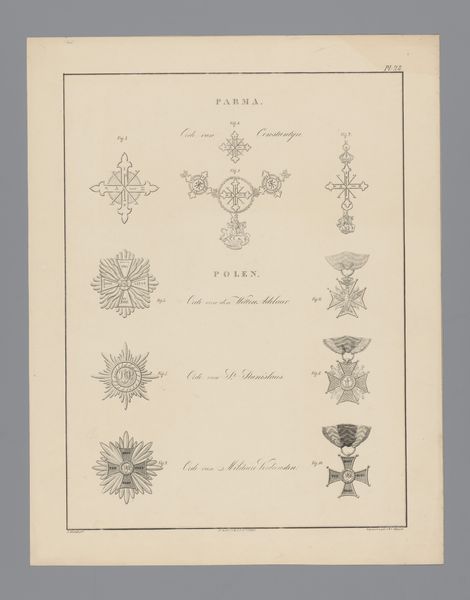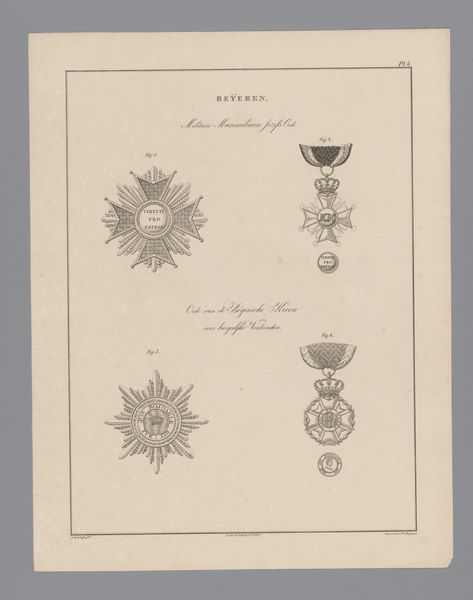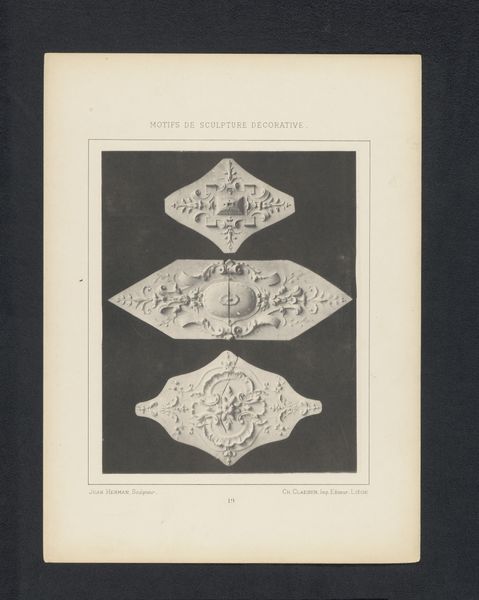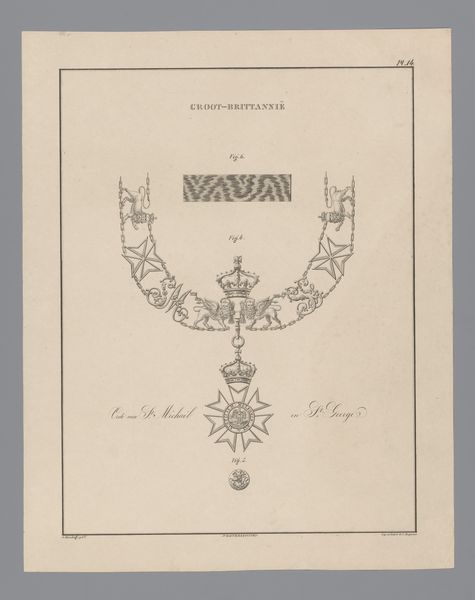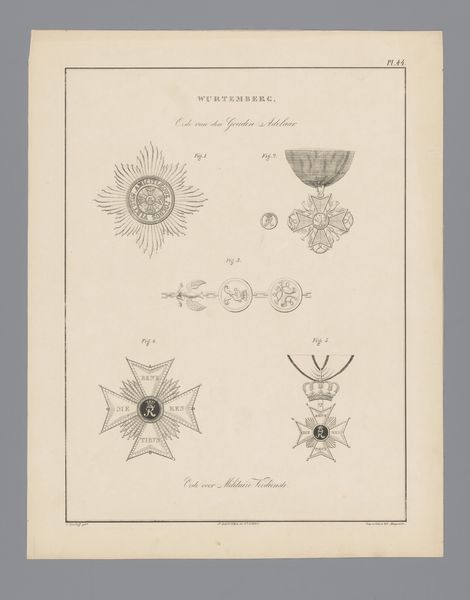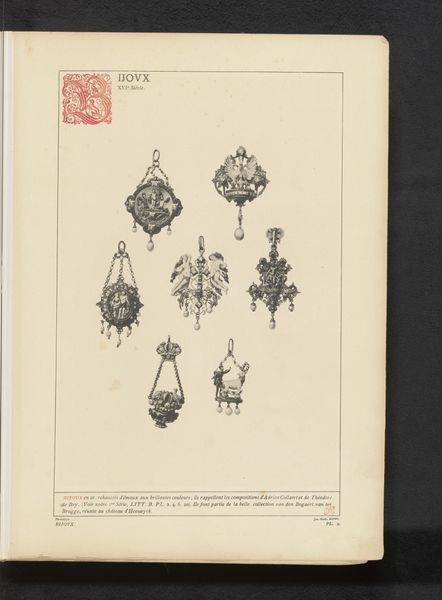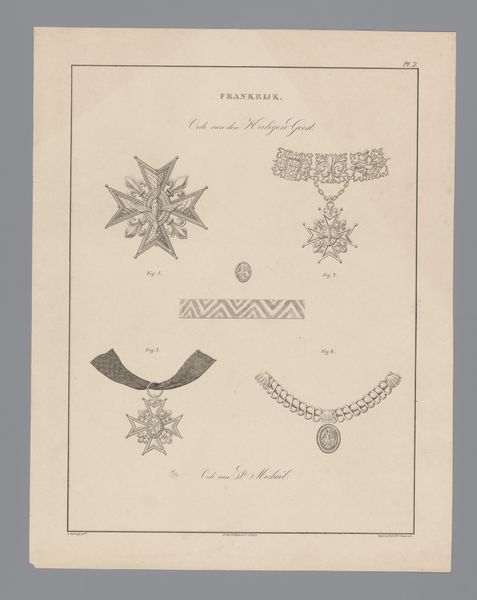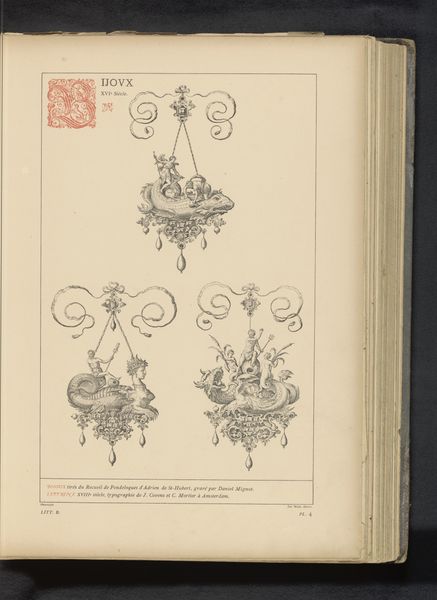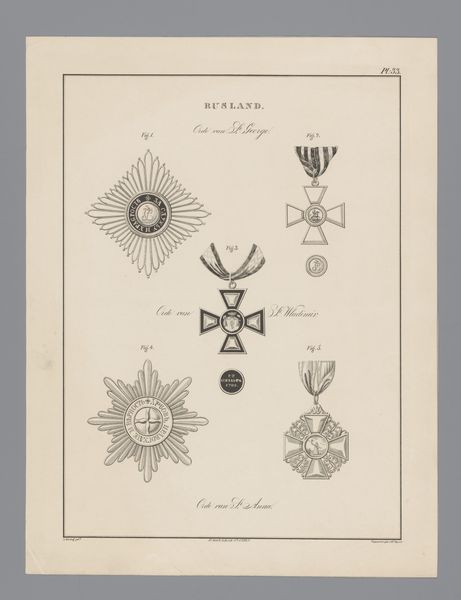
drawing, print, paper, engraving
#
drawing
# print
#
paper
#
geometric
#
line
#
history-painting
#
academic-art
#
engraving
Dimensions: height 400 mm, width 320 mm
Copyright: Rijks Museum: Open Domain
Editor: So, this print is titled "Drie ridderorden uit Spanje," made in 1843 by Willem Charles Magnenat. It showcases three Spanish chivalric orders in quite a formal manner, all rendered as engravings. What strikes me is the geometric precision. How might we interpret that today? Curator: These aren't just decorative forms, but rather potent symbols of power and hierarchy. In the 19th century, as nation-states consolidated, such emblems were crucial for visually reinforcing social order. What do these symbols tell us about the values being promoted and protected? Editor: I see, so it's not just about aesthetic design, but also about reinforcing social structures. I suppose the very act of codifying these orders in print normalizes the social order, even celebrates colonialism by emphasizing the symbols that give authority. Is that a fair reading? Curator: Precisely. And notice how the geometric shapes lend an air of rationality and permanence to these symbols. These orders are intrinsically linked to notions of nobility, military achievement, and religious piety, deeply embedded in a system of inherited privilege. I wonder if these orders helped suppress resistance against colonial exploitation? Editor: Absolutely. So this print becomes more than just a record. It becomes a political document solidifying power and faith. It makes me consider how visual language perpetuates ideology. I never thought of the gender aspect until you brought it up, that's really shifted my perspective. Curator: Indeed. By interrogating these symbols, we uncover the power dynamics that shape not only historical events, but our present realities as well. The visual rhetoric present then has resounding effects, creating a precedent of conquest, power, and submission. Editor: I understand! The precision, while seemingly innocuous, signifies order, which becomes so much more loaded when considered through a critical, socio-political lens. Thanks for showing me that, so interesting!
Comments
No comments
Be the first to comment and join the conversation on the ultimate creative platform.
